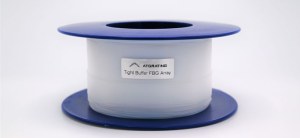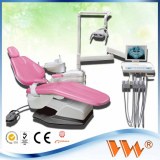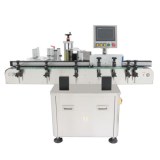For different applications, there are multi-points monitoring requirements, we offer all kinds of packaged fbg sensor array which different wavelengths FBG can be inscribed into a single splice less fiber, and packed with different form factored material and cables to meet with different application environments.
Types of FBG Array & Cable
Bare FBG Array
The products that were inscribed with multiple FBG strings of different wavelengths in a single Acylate coated or Polyimide coated SM fiber. With its charactoristics of no splicing point, Long Fiber Distance, FBG arrays are commonly used in Distributed Sensing Measurement.
Tight Buffer FBG Array
FBG arrays housed in an outer cable of which the material is PVC, nylon or hytrel which protects the FBG sensors and enhance its the construction.
GFRP FBG Array
FBG arrays embedded in a glass fiber reinforced plastic (GFRP) that permits the FBG to expand and compress freely with the strain variation.
Armored Fiber Optic Sensing Cable
FBG arrays housed in an armored cable made of PE, PU, or Teflon coat which protects the FBG sensors and ruggedizes the overall construction of the cable.
FAQs of FBG Array & Cable
Q
How many FBGs you can inscribed into a single fiber?
A
Theoretically, you can engrave an infinite number of FBGs on a single fiber, as long as you keep different Bragg wavelengths on different FBGs.
But practically speaking, the wavelength band is limited due to the limitation of the broadband light source and the receiving and detecting module of the fiber grating interrogator. At the same time, since the Bragg wavelength changes with the influence of temperature and strain. Therefore, it must be ensured that the gap distance between the Bragg wavelengths of the fiber grating does not overlap. In this way, the interrogator can distinguish different fiber gratings according to different reflection wavelengths.
Another characteristic that affects the number of fiber gratings is the power available to receive reflections from the Bragg gratings. This depends on the transmit power of the interrogator, the losses along the way (including bend loss, connector loss, splice loss, fiber length loss), and the reflectivity of the Bragg grating.
Therefore, there are many situations that will affect the number of FBGs. Generally, in the commonly used C-band, it is recommended to use no more than 13 or 14 fiber gratings on a single fiber grating sensor.
Q
What is the common application of FBG Array & Cable?
A
The products that engrave multiple fiber gratings with different wavelengths on fiber and package them into a fiber grating sensor are called quasi-distributed fiber grating sensors, also known as string fiber grating sensors, or array fiber grating sensors.
The quasi-distributed fiber grating sensor can realize the simultaneous measurement of multiple points and multiple parameters with only one sensor, such as temperature, strain, etc, while the most common used is quasi-distributed temperature sensing cable, which are used to monitor the temperatures in tunnel, metro, oil pipeline, railway, etc.
Now the price of fiber optic strain sensor is affordable, if you have needs, please contact us.
Location : 5F, Building B, Chiwan Industry Park, Shaodi Road, Shekou, Nanshan, Shenzhen City, 518068 shenzhen,
Contact : .com AtG, 0755 2667 4283







